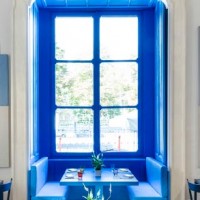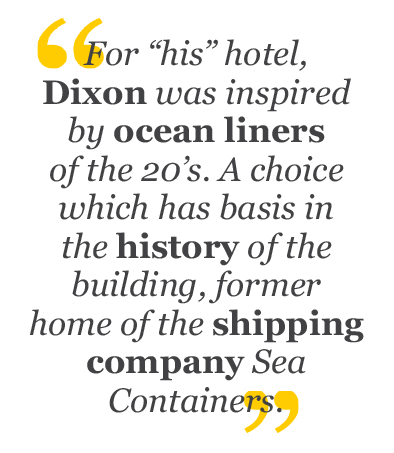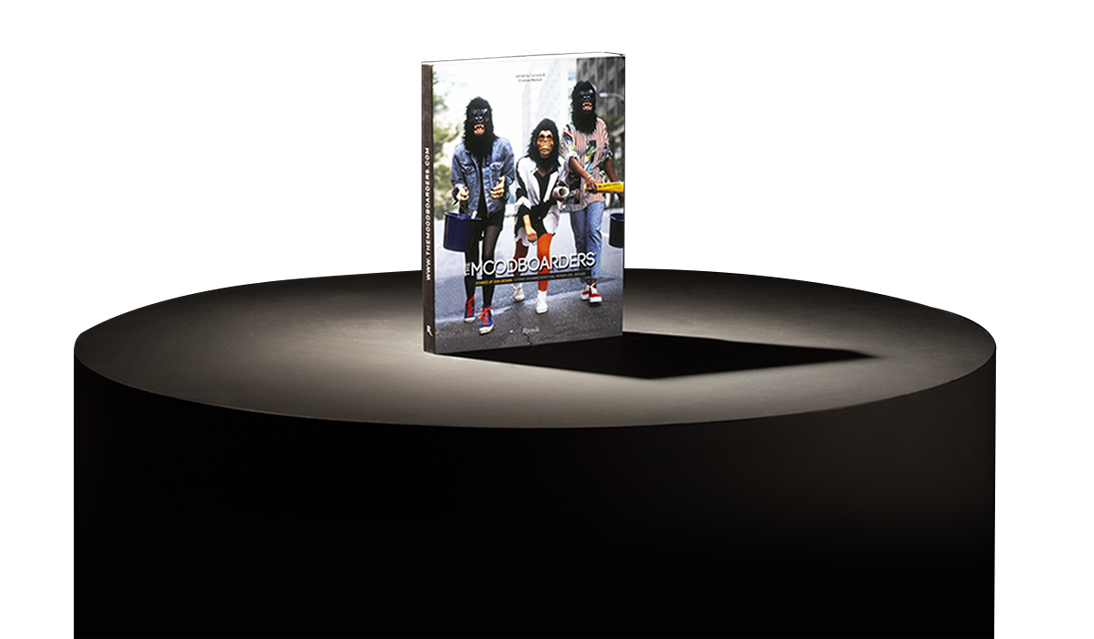
Villa Vela, Welcome home
26 November 2015
14 May 2015

The interiors of the Mondrian Hotel in London were designed by Tom Dixon. A tempting opportunity for the British designer and his Design Research Studio, because in designing all the interiors of a hotel – the lobby, bar, spa, restaurant and rooms – one effectively can create a world apart. For “his” hotel, Dixon was inspired by ocean liners of the 20’s. A curious choice, but which, in fact, has basis in the history of the building housing the Mondrian Hotel. The building dates back to the 70’s and is former home of the shipping company Sea Containers. Bevelled corners, wood paneling, velvet upholstery and marble surfaces: everything seems to harken back to nautical environments of the past. Even the rooms were designed as cabins, with functional furniture made to measure. What differentiates them from the accommodation of a ship? The large windows that open onto the Thames!







WHERE: 20 Upper Ground, London SE1 9PD, Regno Unito
The interiors of the Mondrian Hotel in London were designed by Tom Dixon. A tempting opportunity for the British designer and his Design Research Studio, because in designing all the interiors of a hotel – the lobby, bar, spa, restaurant and rooms – one effectively can create a world apart. For “his” hotel, Dixon was inspired by ocean liners of the 20’s. A curious choice, but which, in fact, has basis in the history of the building housing the Mondrian Hotel. The building dates back to the 70’s and is former home of the shipping company Sea Containers. Bevelled corners, wood paneling, velvet upholstery and marble surfaces: everything seems to harken back to nautical environments of the past. Even the rooms were designed as cabins, with functional furniture made to measure. What differentiates them from the accommodation of a ship? The large windows that open onto the Thames!
WHERE: 20 Upper Ground, London SE1 9PD, Regno Unito



The Moodboarders is a glance into the design world, which, in all of its facets, captures the extraordinary even within the routine. It is a measure of the times. It is an antenna sensitive enough to pick-up on budding trends, emerging talents and neglected aesthetics. Instead of essays, we use brief tales to tune into the rhythm of our world. We travelled for a year without stopping, and seeing as the memory of this journey has not faded, we have chosen to edit a printed copy. We eliminated anything episodic, ephemeral or fading, maintaining a variety of articles that flow, without losing the element of surprise, the events caught taking place, and the creations having just bloomed.